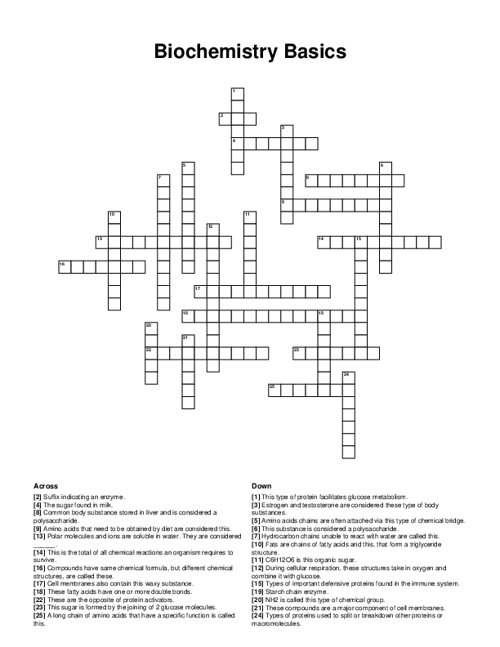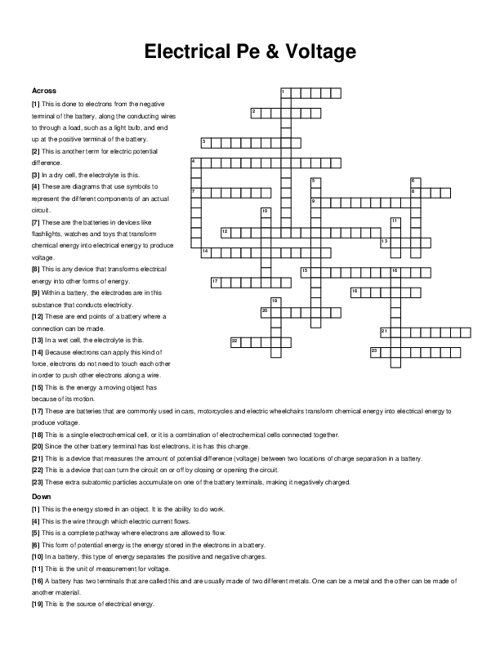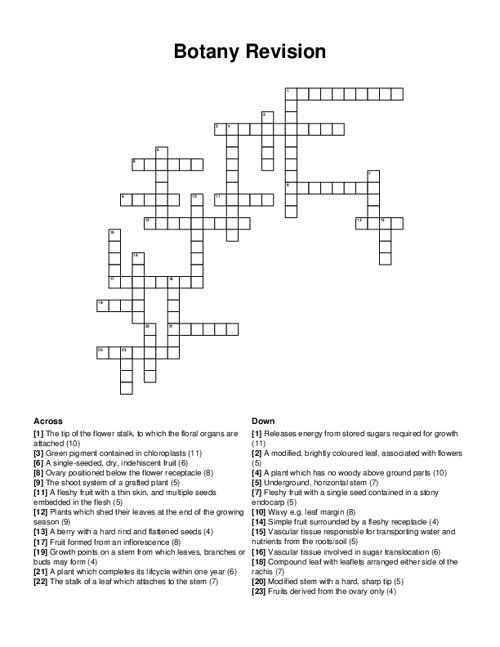Biochemistry Basics Crossword Puzzle
Download and print this Biochemistry Basics crossword puzzle.
Related puzzles:
QUESTIONS LIST:
- mitochondria : during cellular respiration, these structures take in oxygen and combine it with glucose.
- hydrophilic : polar molecules and ions are soluble in water. they are considered _ .
- lipids : these compounds are a major component of cell membranes.
- glycogen : common body substance stored in liver and is considered a polysaccharide.
- cholesterol : cell membranes also contain this waxy substance.
- glucose : c6h12o6 is this organic sugar.
- amylase : starch chain enzyme.
- antibodies : types of important defensive proteins found in the immune system.
- protein : a long chain of amino acids that have a specific function is called this.
- inhibitors : these are the opposite of protein activators.
- hydrophobic : hydrocarbon chains unable to react with water are called this.
- lactose : the sugar found in milk.
- hormones : estrogen and testosterone are considered these type of body substances.
- cellulose : this substance is considered a polysaccharide.
- monounsaturated : these fatty acids have one or more double bonds.
- insulin : this type of protein facilitates glucose metabolism.
- di sulfide : amino acids chains are often attached via this type of chemical bridge.
- amine : nh2 is called this type of chemical group.
- isomers : compounds have same chemical formula, but different chemical structures, are called these.
- maltose : this sugar is formed by the joining of 2 glucose molecules.
- ase : suffix indicating an enzyme.
- essential : amino acids that need to be obtained by diet are considered this.
- glycerol : fats are chains of fatty acids and this, that form a triglyceride structure.
- metabolism : this is the total of all chemical reactions an organism requires to survive.
- enzymes : types of proteins used to split or breakdown other proteins or macromolecules.





